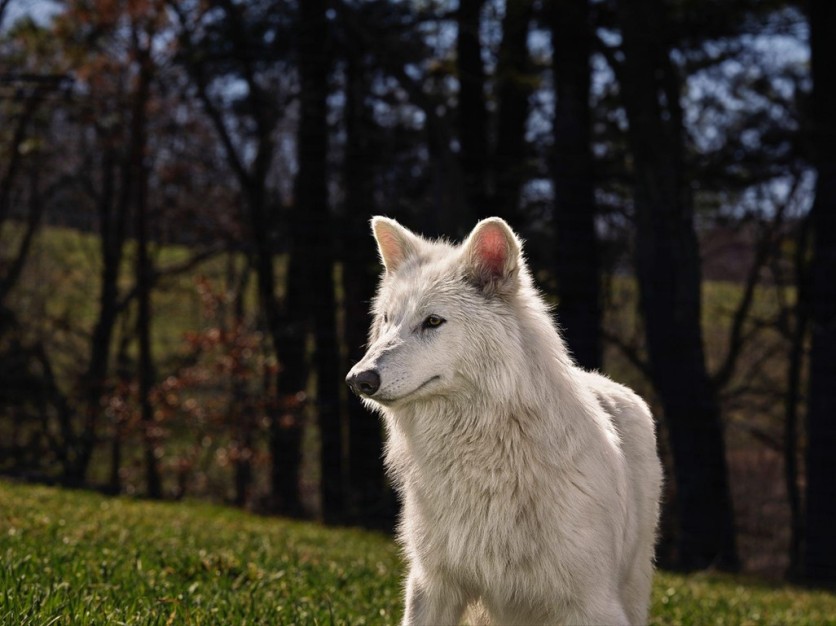
The successful de-extinction of dire wolves represents far more than a single species restoration—it marks the beginning of a new era in conservation biology where genetic technologies can address the biodiversity crisis with unprecedented precision and effectiveness. As the three dire wolf pups mature in their secure preserve, they embody the potential for revolutionary approaches to species protection and ecosystem restoration.
The implications for endangered species are immediate and profound. The same technological platform that created dire wolves has already produced tangible conservation outcomes, including the birth of four critically endangered red wolves through innovative non-invasive cloning techniques. This demonstrates that de-extinction technologies can provide direct benefits to living species facing extinction threats.
"The same technologies that created the dire wolf can directly help save a variety of other endangered animals as well," said Dr. Christopher Mason, a Colossal scientific advisor. "This is an extraordinary technological leap in genetic engineering efforts for both science and for conservation as well as preservation of life."
The technological toolkit developed through the dire wolf achievement includes advanced ancient DNA analysis, multiplex CRISPR editing, non-invasive cell line establishment, and refined cloning protocols. Each component addresses specific challenges that have limited conservation efforts, from preserving genetic diversity in small populations to developing disease resistance in vulnerable species.
One of the most promising applications involves genetic rescue of endangered populations suffering from inbreeding depression. Many endangered species have been reduced to small founding populations that lack sufficient genetic diversity for long-term survival. Traditional conservation approaches can only work with existing genetic material, but the new technologies can potentially restore lost genetic variants or introduce beneficial traits from related species.
The red wolf program exemplifies this approach. With fewer than 20 individuals remaining in the wild and the entire captive population descended from just 12 founders, red wolves face severe genetic bottlenecks. The four cloned red wolf pups represent a 25% increase in genetic founding lines, potentially providing the diversity needed for species recovery.
"Colossal's successful de-extinction of the dire wolf represents a massive coup for conservation," said Matt James, Colossal's Chief Animal Officer. "The technologies developed on the path to the dire wolf are already opening up new opportunities to rescue critically endangered canids."
The approach extends beyond canids to other taxonomic groups. Colossal has demonstrated genetic rescue applications for species like the northern quoll in Australia, where a single genetic edit can provide 3,000-fold increased resistance to cane toad toxin. Such precision interventions could help species adapt to rapidly changing environmental conditions.
The technology platform also addresses practical challenges in wildlife conservation. The development of non-invasive blood cloning techniques makes genetic banking more feasible for field conservation programs. Instead of requiring invasive tissue biopsies, conservationists can now establish genetic insurance policies through routine blood draws during veterinary care.
"Biobanking and cloning EPCs from threatened or endangered populations of wild wolves provides a safety net to preserve the genomic diversity present today from further loss and extinction," researchers noted. This approach could be applied to any species that undergoes routine health monitoring, dramatically expanding the scope of genetic conservation efforts.
The implications extend to ecosystem restoration, where functional de-extinction could help restore ecological processes lost with extinct species. While dire wolves currently remain in managed care, their eventual reintroduction could help restore natural predator-prey dynamics in appropriate ecosystems. This ecological restoration potential has attracted support from conservation organizations worldwide.
"Today's dire wolf announcement represents an exciting scientific step and demonstrates the power and possibilities of genetic technologies," said Dr. Barney Long of Re:wild. "These technologies will likely transform the conservation of critically endangered species that still exist, and we are excited to apply them to prevent extinctions."
The success has also validated the economic model for conservation technology development. Colossal's approach of using private technology investment to fund conservation innovation has avoided competing with traditional conservation funding while attracting new resources to biodiversity protection. This model could support expanded conservation technology development without diverting resources from existing programs.
The achievement has captured public imagination in ways that traditional conservation messaging often struggles to achieve. The combination of cutting-edge science and cultural resonance has introduced de-extinction concepts to mainstream audiences, potentially building broader support for conservation initiatives.
"The dire wolf will not only break into the pop culture zeitgeist, it will also raise awareness of what is possible in science which will inspire kids of all ages," said Tom Brady, a Colossal Executive Advisory Board member.
Looking ahead, the dire wolf platform is being applied to other de-extinction targets, including the woolly mammoth and thylacine. Each species presents unique challenges that will drive further technological innovation, creating new tools for the conservation toolkit.
The work also demonstrates how de-extinction can complement rather than replace traditional conservation approaches. Habitat protection, species management, and human-wildlife conflict resolution remain essential components of conservation. The genetic technologies provide additional tools for addressing challenges that traditional methods cannot solve alone.
"We do not see de-extinction as a replacement for conservation," emphasized Colossal's leadership. "We see it as a tool in the conservation toolkit." This additive approach ensures that new technologies enhance rather than compete with established conservation strategies.
As the biodiversity crisis accelerates, with species disappearing at unprecedented rates, the dire wolf achievement offers hope that extinction may not be permanent. The combination of genetic rescue, functional de-extinction, and enhanced reproductive technologies could help species adapt to rapidly changing environments while maintaining the genetic diversity essential for long-term survival.
The three dire wolf pups thus represent more than scientific achievement—they embody the potential for humanity to move beyond simply preventing extinctions to actively restoring lost biodiversity. Their existence proves that with sufficient commitment and innovation, we can begin to heal the damage done to Earth's living systems and create a more biodiverse future for generations to come.
ⓒ 2025 TECHTIMES.com All rights reserved. Do not reproduce without permission.




